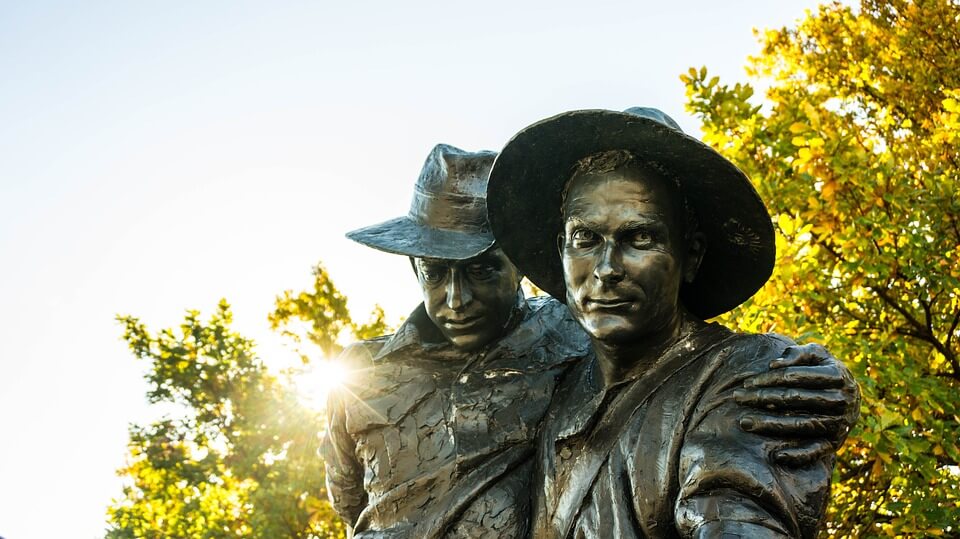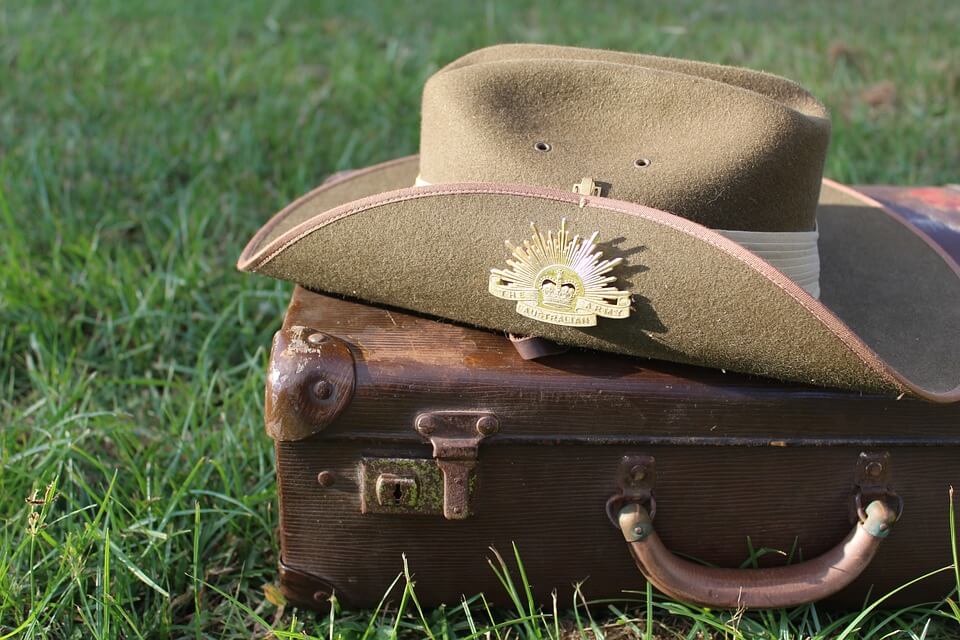Learn about the history of Anzac Day, its traditions, and how to observe this important day of national remembrance in Australia and New Zealand.
Discover the significance of this day, its importance to national identity, and how it honors the service and sacrifice of Australian and New Zealand servicemen and women.
ANZAC Day is a national day of remembrance observed in Australia and New Zealand on April 25th every year. It is a day to honor and remember the service and sacrifice of Australian and New Zealand Army Corps (ANZAC) soldiers who fought and died in all wars, conflicts, and peacekeeping operations. The day also commemorates the landing of ANZAC forces on the Gallipoli Peninsula in Turkey during World War I, on April 25th, 1915, which was the first major military action fought by Australian and New Zealand forces during the war. ANZAC Day is marked by ceremonies, parades, and other events across Australia and New Zealand, including dawn services, wreath-laying ceremonies, and marches, as well as community gatherings and memorial services.

Source: pixabay.com
History of Anzac Day
ANZAC Day commemorates the landing of ANZAC troops on the Gallipoli Peninsula in Turkey during World War I, on April 25th, 1915. The ANZAC troops were part of a larger Allied force that was attempting to capture the peninsula and open up a sea route to Russia. However, the campaign was ultimately unsuccessful, and the ANZAC troops suffered heavy losses before being evacuated in December 1915.
After the war, April 25th became a day of remembrance for the ANZACs and their sacrifice. The first ANZAC Day commemoration was held on April 25th, 1916, with services and parades held in Australia, New Zealand, and London. Over time, ANZAC Day became an important day of national remembrance, honoring not only the ANZACs who served and died in World War I but also those who served in subsequent conflicts.
ANZAC Day was officially recognized as a public holiday in Australia and New Zealand in the 1920s, and the day has been marked by ceremonies and events ever since. In recent years, ANZAC Day has also become an occasion for Australians and New Zealanders to reflect on the meaning of national identity and the importance of honoring the sacrifices of those who have served their country.

Source: pixabay.com
Anzac Day Timeline
Here is a brief timeline of the history of ANZAC Day:
- April 25th, 1915: ANZAC troops land on the Gallipoli Peninsula in Turkey during World War I.
- April 25th, 1916: The first ANZAC Day commemoration is held, with services and parades held in Australia, New Zealand, and London.
- 1920s: ANZAC Day is recognized as a public holiday in Australia and New Zealand.
- 1941-1945: ANZAC troops serve in World War II, with ANZAC Day becoming a day to remember the sacrifices made by Australian and New Zealand servicemen and women.
- 1960s: ANZAC Day becomes a focus for anti-war protests and demonstrations.
- 1990s: ANZAC Day regains its status as a day of national pride and remembrance, with large numbers of people attending dawn services and other commemorative events.
- 2015: The centenary of the Gallipoli landings is marked with special events and commemorations across Australia and New Zealand, as well as in Turkey.
- 2020-2021: Due to the COVID-19 pandemic, many ANZAC Day events are cancelled or held in a limited capacity, with people encouraged to commemorate the day at home.
ANZAC Day has evolved over the years, but it remains an important day of national remembrance in Australia and New Zealand, honoring the service and sacrifice of those who have served their country.
Traditions of The Day
ANZAC Day is marked by a number of traditions and ceremonies that have developed over time. Some of the key traditions of the day include:
- Dawn Service: A dawn service is held in many towns and cities across Australia and New Zealand. The service typically begins before sunrise and includes a commemorative address, the laying of wreaths, and a minute of silence.
- ANZAC Marches: ANZAC Day marches are held in many towns and cities, with veterans, current servicemen and women, and other members of the community participating. The marches are often led by a military band, and members of the public are encouraged to line the streets and show their support.
- Two-Up: Two-Up is a traditional gambling game that has become associated with ANZAC Day. It involves tossing two coins and betting on whether they will land on heads or tails. Two-Up games are often held in pubs and clubs on ANZAC Day.
- Wreath-Laying Ceremonies: Wreath-laying ceremonies are held at war memorials and other significant sites, with wreaths laid in honor of fallen soldiers.
- Moment of Silence: A minute of silence is observed at 11:00 am on ANZAC Day, to remember those who have served and sacrificed for their country.
- Poppies: Poppies are worn on ANZAC Day as a symbol of remembrance. The tradition of wearing poppies comes from the poem “In Flanders Fields” by Lieutenant Colonel John McCrae, which describes the poppies that grew on the graves of fallen soldiers in World War I.
These traditions help to make ANZAC Day a meaningful and significant day of remembrance for Australians and New Zealanders, and a time to reflect on the service and sacrifice of those who have served their country.

Source: pixabay.com
How to Observe Anzac Day
Here are some ways to observe ANZAC Day:
- Attend a Dawn Service: Attend a dawn service to commemorate the landing of ANZAC troops at Gallipoli. Many towns and cities across Australia and New Zealand hold dawn services on ANZAC Day.
- Attend a March or Parade: Attend a march or parade to honor the service and sacrifice of Australian and New Zealand servicemen and women. The marches are often led by a military band and include veterans, current servicemen and women, and other members of the community.
- Lay a Wreath: Lay a wreath at a war memorial or other significant site to remember fallen soldiers.
- Participate in Two-Up: Participate in a game of Two-Up, a traditional gambling game that has become associated with ANZAC Day.
- Wear a Poppy: Wear a poppy as a symbol of remembrance. Poppies are sold in the lead-up to ANZAC Day, and the proceeds go to support veterans and their families.
- Watch the ANZAC Day March and Ceremony on TV: If you are unable to attend an ANZAC Day event in person, many TV networks broadcast the ANZAC Day march and ceremony.
- Pause for a Moment of Silence: Observe a minute of silence at 11:00 am on ANZAC Day to remember those who have served and sacrificed for their country.
Overall, ANZAC Day is an important day of national remembrance in Australia and New Zealand, and there are many ways to honor the service and sacrifice of those who have served their country.
Facts About Anzac Day
Here are some interesting facts about ANZAC Day:
- The term “ANZAC” stands for Australian and New Zealand Army Corps.
- The first ANZAC Day was held on April 25th, 1916, one year after the ANZACs landed at Gallipoli.
- ANZAC Day was initially intended to commemorate the landing at Gallipoli, but it later became a day to remember all Australians and New Zealanders who have served in wars, conflicts, and peacekeeping operations.
- ANZAC Day is observed in Australia, New Zealand, and other countries around the world where Australian and New Zealand servicemen and women have served.
- The ANZAC Day march in Sydney, Australia is one of the largest ANZAC Day marches in the world, with thousands of participants.
- ANZAC Day is a public holiday in both Australia and New Zealand.
- The poppy has become a symbol of remembrance for ANZAC Day, inspired by the poem “In Flanders Fields” by Lieutenant Colonel John McCrae.
- The Last Post, a bugle call, is traditionally played at ANZAC Day services to signify the end of the day for soldiers.
- ANZAC biscuits, a type of oat biscuit, were originally made by wives and mothers and sent to soldiers serving overseas during World War I.
- The Gallipoli campaign lasted for eight months and resulted in the deaths of over 8,000 Australian and New Zealand soldiers, as well as thousands of soldiers from other countries involved in the campaign.
Why Anzac Day is Important
ANZAC Day is an important day of national remembrance in Australia and New Zealand because it honors the service and sacrifice of Australian and New Zealand servicemen and women who have served their countries in wars, conflicts, and peacekeeping operations. Here are some reasons why ANZAC Day is important:
- Remembrance: ANZAC Day is an opportunity to remember the brave men and women who have served and sacrificed for their country. It is a day to honor their courage and sacrifice, and to acknowledge the debt that we owe to them.
- National Identity: ANZAC Day is an important part of Australian and New Zealand national identity. The ANZAC spirit of courage, endurance, and mateship has become a symbol of the Australian and New Zealand character, and is celebrated on ANZAC Day.
- Family History: ANZAC Day is a time for families to remember their own family members who have served their country. Many families have ancestors who fought in wars and conflicts, and ANZAC Day provides an opportunity to honor their memory.
- Education: ANZAC Day is an opportunity to educate future generations about the service and sacrifice of Australian and New Zealand servicemen and women. Schools and community groups often organize ANZAC Day activities and events to teach young people about the history and significance of ANZAC Day.
Unity: ANZAC Day is a day of national unity, where Australians and New Zealanders come together to remember and honor those who have served their countries. It is a day to celebrate the ANZAC spirit of courage, endurance, and mateship that has become a symbol of the Australian and New Zealand character.